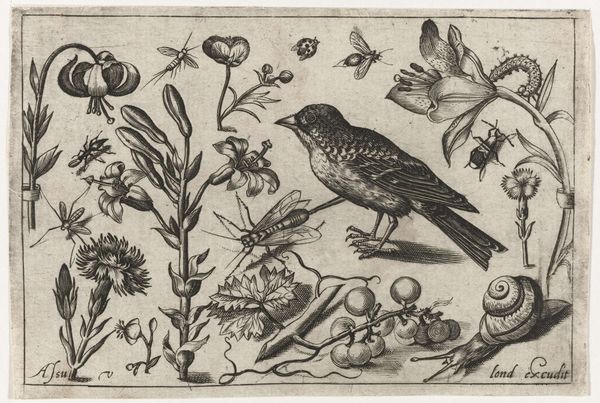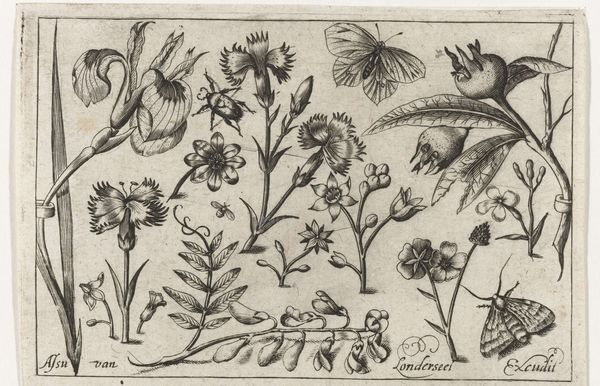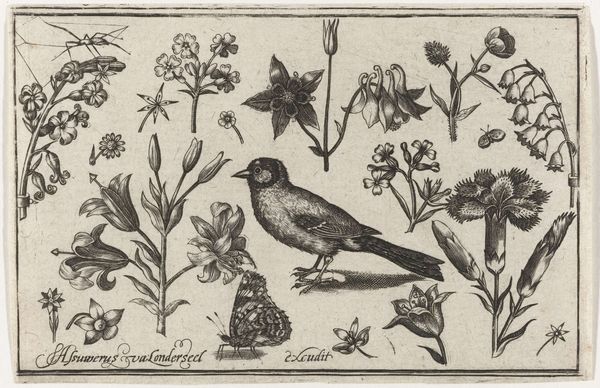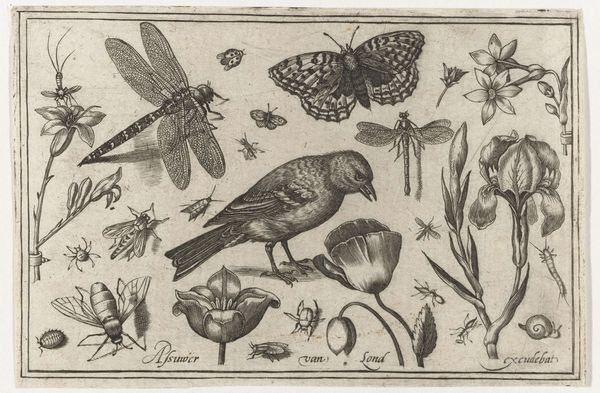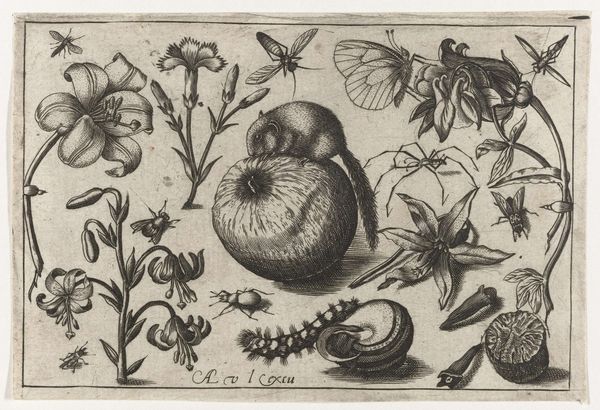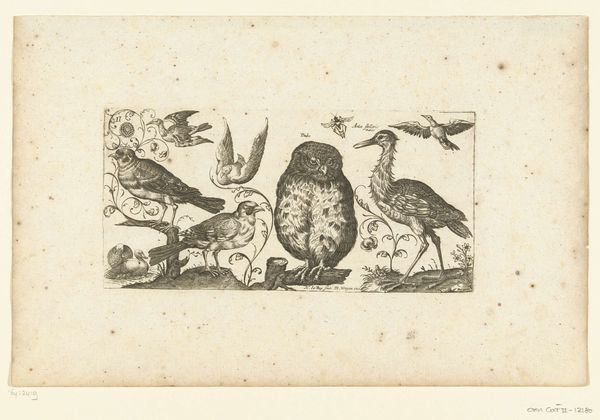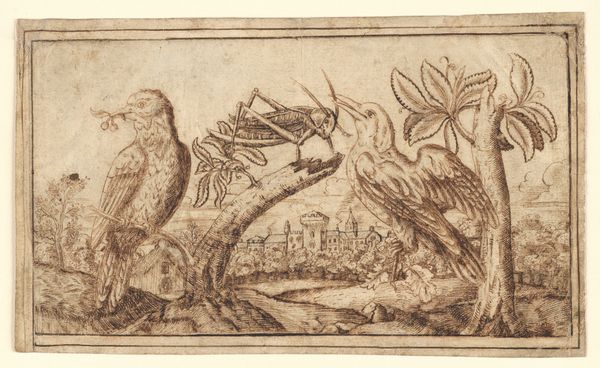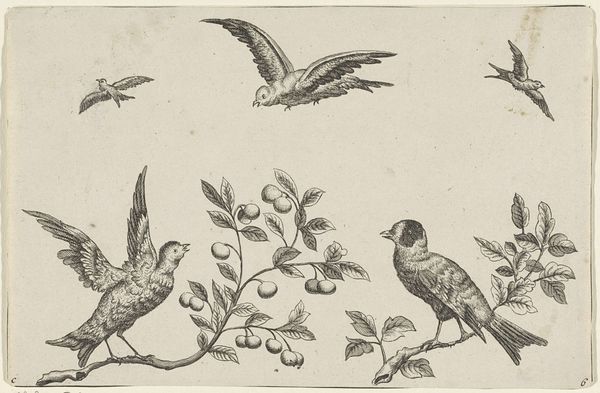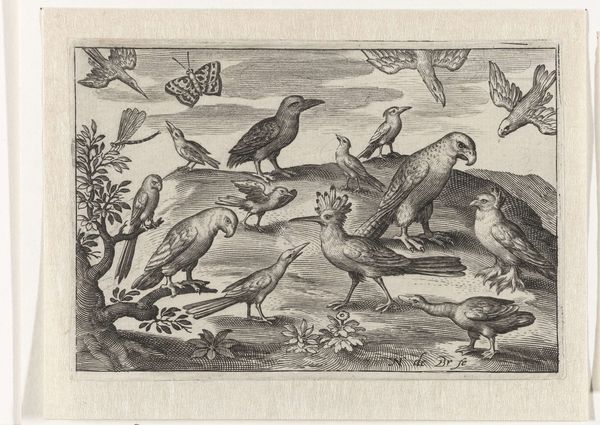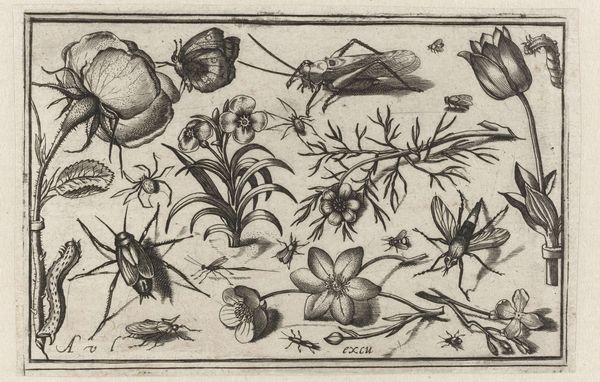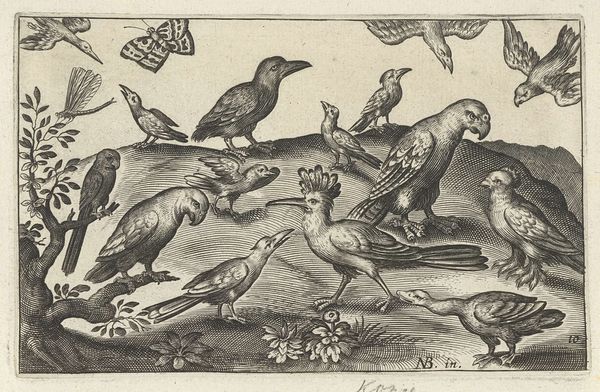
print, etching, engraving
#
pen drawing
#
dutch-golden-age
# print
#
pen illustration
#
pen sketch
#
etching
#
engraving
Dimensions: height 94 mm, width 141 mm
Copyright: Rijks Museum: Open Domain
Editor: We are looking at "Bloemen, een peer en een duif," or "Flowers, a Pear and a Dove" by Nicolaes de Bruyn, created around 1594. It's a print, etching and engraving, with striking details of flowers, insects, and fruit arranged almost like a botanical study. What grabs you about this piece? Curator: The materiality is really where the power resides. We're seeing reproductive technologies at work here, etching and engraving—methods dependent on craft labor and dissemination. Notice how these processes, inherently reproducible, democratize images. Before this, who could afford such detailed studies? Consider, too, the materials themselves: metal plates, acids, inks. These are products of industry, commodities driving artistic production. How does this interplay of nature and industry strike you? Editor: That’s a good point. The image looks so detailed, like someone had to be extremely careful, and I had been focused more on the composition, but considering the physical aspect really gives a completely different picture. Would these be considered precious materials back then? Curator: Absolutely, materials signified status. But more than that, let's think about the consumption. Prints like these became part of a burgeoning market, finding their way into homes and collections, shaping visual culture. The 'exotic' flowers depicted also hint at trade networks and the global movement of goods and materials. The labour, the object and then, it's placement as a commercial piece opens a totally new dimension to its value. Now do we consider this a purely aesthetic exercise? Editor: No, not at all! I originally thought of it as just a pretty natural scene, but now I see how the medium itself and the social and economic factors behind it are just as significant, if not more so. It is more about the value than the beauty. Curator: Precisely! We must look beyond the surface. These materials and processes don’t just *make* the art, they *inform* its meaning and the viewer’s position relative to it.
Comments
No comments
Be the first to comment and join the conversation on the ultimate creative platform.

